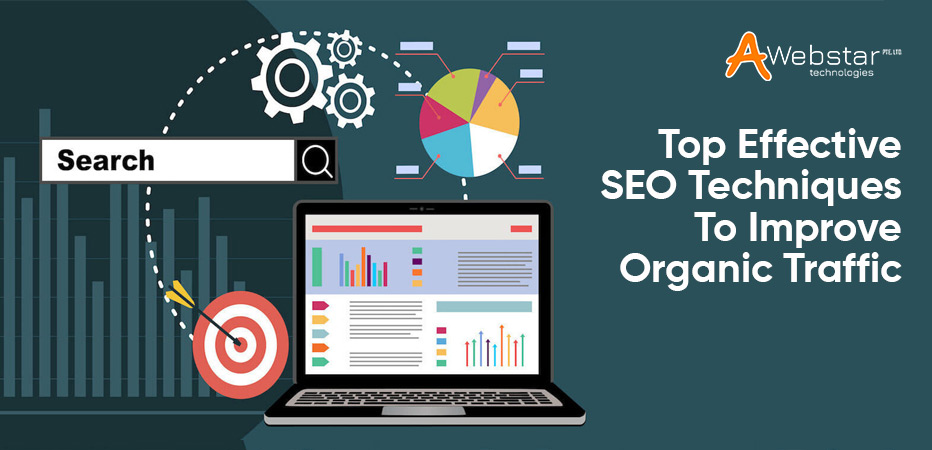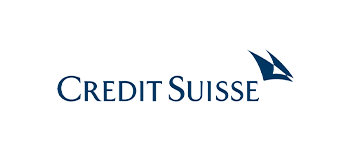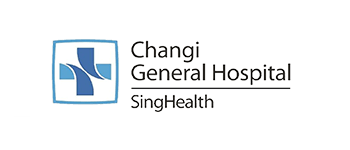
Thinking about the speed at which SEO techniques are changing?
Is it on a constant slope?
If so, then you are not alone. Because Google is smarter and more powerful! It not only examines and conjectures the web pages, however, also how efficient it is to hold people within them.
Why?The better Google responds to SERP queries or leads users to ads rather than organic ads, the more money it earns.
Sadly, this makes everything more difficult for those of us who depend on Google’s organic traffic as a lifeline. Yes, SERPs are evolving, besides, for more, not for better! They are changing by:
- Converting knowledge panels and leveraging them frequently.
- Tailoring ads
- Showing video and image packs
The above things are responsible for putting the organic listing down in the SERPs. This results in fewer organic clicks and more requirements for online retailers to advance in paid listings. The question here is- what should the marketers do then?
To answer this question, here in this article, we are listing the SEO techniques that help you improve organic traffic. However, it is essential to find out first, what organic traffic is and why it is important?
What is Organic Traffic?
Now that you have your website and are doing SEO to increase its visibility in search results, you have most likely also come across this popular term – organic traffic.
The way to get traffic to an Internet resource through search engines (without advertising budgets and campaigns) is called organic traffic. Organic promotion has several benefits for online businesses:
- Long-term action
- Profitability
- Positive impact on the quality of the audience (people who are interested in the product/company come to the website)
- Positive impact on brand awareness and customer loyalty
Why is Organic Traffic Important?
Organic traffic is considered more important than paid traffic, Facebook traffic, or traffic from any other social media platform. The reason is simple – it’s free, which means your website is gaining acceptance. It does not need to appear intentionally at any time in the form of ads, which most people don’t like.
In addition, users who enter a query into a search engine have a specific intent. Getting them to land on your website and make them your customers means that you will ultimately achieve your goals without unnecessary investment.
As per the statistics, 68% of online experiences begin with a search engine. 53.3% of the website traffic is from organic search. 92.96% of global traffic originates from Google Maps, Google Images, and Google search. 90.63% of pages do not experience organic search traffic from Google.
The main advantages of organic traffic are:
- Shareware; that allows you to cut the budget for advertising campaigns
- There is an increase in the number of the application, an expansion of the contact base, an increase in the percentage of regular customers;
- You are attracting users who already want to make a purchase
How To Boost Organic Traffic With Top-Notch SEO Techniques
Send Emails to Everyone you Link to
Backlinks are known as an essential ranking factor, link building can be a daunting task. You need to get prospective contacts and their email addresses, then check them and somehow convince them to link to you.
If this sounds intimidating, an easier way to get started is by sending emails to everyone you link to.
For example, we recommend many link-building tools, such as Pitchbox, Mailshake, and Buzzstream. It would be quite simple to contact their founders or marketing managers and let them know about the recommendation.
Note that you don’t need to ask for a link in the email. This is not the essence of our advice. The point is to strike up an acquaintance and start communicating. If your content is unique and well written, then you will often receive compliments. This naturally leads to reposting on social media and sometimes to linking opportunities such as guest posts and other collaborations.
Update Existing Content with Missing Subtopics
Most primary drafts are not absolute. You will essentially certainly miss important points that can prevent your page from ranking high in search engines. So here’s what you can do.
Enter the URLs of two or three pages from the top for your main target keyword into the missing semantics tool. At the bottom, enter the URL of your page. Then click “Show keywords” and you will see the keywords for which the top pages rank, but not you.
Include Internal Links in the New Pages
Internal links are backlinks from one page of your website to another. They help visitors navigate from page to page and distribute “link authority” across your website. Google also uses its anchor text for contextual understanding.
The problem is that when you publish a new page, it will have few or no internal links. So if you want your page to have the best chances of ranking, it’s worth adding them.
Search Google for: site: yourwebsite.com for “SEO best practices” to find suitable opportunities. Each result would be the page on the site that has the phrase “ SEO best practices”.
Respond to Related Queries in HARO
HARO is a service that allows journalists to connect with sources of information. Subscription is free, after registration, you will receive daily emails with requests from journalists.
Like; if you are looking for an expert in the banking system to answer a few questions about bank deposits without an early termination penalty. Name, category, email, deadline, query, and requirement, etc. are some of the details mentioned in the email.
After receiving such a letter, all you need to do is check that you meet the specified requirements and respond to them. If your answer is used in a post, they will usually point to you with a link.
The challenge with HARO is that they send three emails a day. Considering that most requests are irrelevant to you, this can be a problem. Fortunately, filters in Gmail can easily solve this problem.
Here’s how to do it.
After signing up to HARO and subscribing to topics that interest you, move to your Gmail and click on the arrow in the search bar. In the “Form” field, enter haro@helpareporter.com, in the “Subject” field, “[ HARO ]”, and then enter the keyword or words you want to monitor in the “Contains words” field.
Then, hit search and check a few results, make sure they are relevant. If so, select on the arrow and click “Create Filter”. You will then have the choice to mark important, apply shortcuts, or redirect to another employee to take care of it.
Repurpose Blog Posts For Video
People like mixed content formats depending on their personal choices. Many love videos, while others like to read. Therefore a simple approach to approach wider visitors is to repurpose your blog posts to video.
But, the question here is how to decide which blog posts are best for repurposing?
If the post is already getting a lot of organic traffic, then this is a good choice for repurposing. Why? Because you can then embed the video in your blog post to appeal to more visitors.
You should also consider repurposing your posts on topics people are looking for on YouTube. Repurposing blog posts to videos can also help you grab multiple spots in Google search results thanks to the video carousel.
Analyze Competing Backlinks for Underperforming Content
If you are still not ranking first for your keyword, it may be because your competitors have more high-quality backlinks. With the free SERP Analyzer, you can get an idea of whether this is the case.
If the pages you are trying to rank out for have more websites linking to them (referring domains), then that may be the reason for your lag. One way to fix this is to monitor people linking to lower-quality content, then try to convince those people to link to you instead.
How? To get started, open a few pages from the top with backlinks and look for outdated, inaccurate, missing, or misleading information. By and large, you’re looking for areas where your pages get an edge over others.
Armed with this information, the next step is to create an alert. Just fill in the URLs of your competitors, then set the Target field to New Links and the alert interval once a day or once a week. Check out every alert notification for the link that you deserve more than your competitor.
Install the Caching Plugin
Caching helps speed up your website for visitors, and for some reason, it matters. First, page load speed is a ranking factor on both mobile and desktop. Second, the likelihood of a visitor leaving increases with page load time.
And while there are many factors affecting page load speed, installing a caching plugin is the quick and easy payoff and only takes two minutes. To do this on WordPress, open the admin panel, then follow these steps:
Plugins -> Add new -> search for “WP Super Cache” -> Install -> Activate. Go to the plugin settings page and make sure caching is enabled.
Fix Pages with Broken Backlinks
Backlinks to non-existent pages can be considered hopelessly lost. They do not help the page rank as it no longer exists, and they probably don’t help other pages rank as well.
How do you know if you have broken backlinks? Filter 404 pages in the Top Link Count report in Ahrefs Site Explorer.
If there are pages with referring domains, then those backlinks are broken.
There are three ways to fix this.
- Recover: If nonexistent pages were deleted by mistake, bring them back. In this case, all backlinks will point to a working page.
- Redirect: If a nonexistent page exists at the new URL, redirect from the old URL to the new one. If the old page no longer exists, but you have a similar page on your site, redirect the old URL to it. Read on to learn how to set up redirects.
- Request a link change: If someone makes a mistake when linking to your page (for example, adding a space at the end of the URL), then you should contact them and point out this.
Just remember that these mistakes are worth fixing if the non-existent pages have high-quality backlinks. If not, then it’s okay to leave them with a 404 status. You can check the quality of a page’s backlinks in the Backlinks report.
Optimize for Definitions in Answer Boxes
Most definition searches show a block with an answer like this:
Google collects this information from one of the pages at the top. In this case, from our blog post on SERPs.
But here’s the thing: if we didn’t have a definition on the page, we wouldn’t be able to appear in this snippet. Google knows that users are looking for a definition, so it will take it out of the page with such information.
All you have to do is to:
Enter your domain in the Website explorer, go to the Keywords report, then filter by the top 10 with your response blocks. Next, filter by keywords containing “what is” and “what is” (“what is”, “this”, “what does it mean”, “what does it mean”), using the filter “Include”.
By adding a clear definition to this post, we get a chance to rank in the response box and get more traffic.
Notify the Content Strategy with Keyword Gap Analysis
When it is about building a content strategy, generally, you will have two major areas, such:
- Optimizing current content
- Generating new content
Optimizing the current content is usually an efficient point (however, it is simple to get results by changing the content strategy which is indexed already rather than overall new content), several websites can approach the stage where the existing pieces are optimized.
You should create the content with the aim and justify why the single piece that you create exists. It implies taking the time to plan the strategy carefully for the new content creation. The quickest and easiest way to drive the content plan is to carry out a keyword gap analysis that will assist you to find out the keywords that the competitors rank for however that you do not. From there, you can build content with these topics and keywords to fill in the gap. These keywords gaps can be used to notify the content strategy and assist you to build the content that competitors are ranking with, however, you do not have in place currently.
Know the Competitor’s Best-Performing Pages
After finding the competitor’s search engine optimization strategy, the website can definitely perform better. When you consume your timing in knowing what is working best for the website, you can stand against the SERPs. However, you can higher the analysis to the other level and know why this strategy is working before informing the individual approach.
The notable starting point is to discover the competitor’s highest performing pages to develop a notion of where the organic traffic is coming from and what it’s being directed by. Examining the rival’s leading pages can guide you in the direction of the things, such as;
- A keyword/content gap
- A link gap
- A chance to enhance the current content
- Keyword cannibalization
This is an easy way to discover the pages that are getting more traffic to contend for the websites. You have to leverage the insight to the next level to find out the web pages that perform better and how-to website design a strategy that lets you get the traffic.
Grow Your Organic CTR With PPC Testing

CTR is the ranking factor and it is the one you must optimize. However, let’s categorize the elements that influence the websites’ CTR. In general, these are:
- Title tag
- Meta description
In particular, these are the ones that have the right amount of control (always remember that image blocks, additional ad space, and the like could push down the organic listing and result in less CTR). However, how do you know that the meta-description and title tag can provide the highest CTR?
You can do this more often by changing and measuring the outcomes, other variables also come into play. If you do not like to wait much for the outcomes, then, you can use PPC for testing the meta descriptions and the title tags.
Assure to accurately set up the test to find what has the right influence on the CTR.
- To discover the right title tag to practice, test three various headlines, however, keep the details of the same for each.
- To discover the best information to use, test three various ones; however, keep the headline/title the same for each.
So, as long as you get enough clicks on the ads, you can rewrite the title tags and meta descriptions with the performance data and enhance the organic CTR.
Optimize The Core Web Vitals
The core web vitals are a ranking signal, with different measures that influence the page experience alongside these, such as:
- Intrusive interstitials
- Safe-browsing
- Mobile-friendliness
- HTTP
Several of these, you have become familiar with and optimizing for less time, however, core web vitals is the main area of focus that you must be contemplating right now.
Launched recently, Core Web Vitals are the set of metrics around visual stability, responsiveness, and speed, described as:
Largest Contentful Paint
It is the time that it is necessary for the main content of the page to load. Generally, it would be 2.5 seconds or faster.
First Input Delay
It is when it takes a web page to be interactive in less than 100 milliseconds ideally.
Cumulative Layout Shift
It is related to the total percent of the visual page content layout shift, which is unexpected being less than 0.1.
Core Web Vitals are the sub-category of the Web Vitals that apply to every web page that must be computed by every website owner and would be surfaced on every Google tool. Every Core Web Vital shows a distinct facet of the user experience that is accessible in the field and shows the real-world experience of the decisive user-oriented outcome.
Clean Up Toxic Links
Similar to how backlinks could assist the website rank higher on Google, the wrong link types also reduce the rankings. If we check Google’s Link Scheme Guide, we can notice the position on links deemed to be toxic or unnatural:
Every link that manipulates the website ranking or Page ranking or website ranking in Google search results might be a part of the violation of Google’s Webmaster Guidelines or link scheme. It includes the behavior that manages the outgoing links from your site or links to the website. It is better to ignore the links. What’s worse is that it might harm the ranking as well.
If the website has toxic links to the link profile, it is advised that you can take some time to clean them. However, let’s check out the reasons why the website has toxic links:
- Links that have been obtained
- Link building with right match anchor text
- Guest posting campaigns or large scale article marketing
- Negative SEO Services
- Bookmark site tactics or low-quality directory
Concluding Remarks
If you like to experience the website organic traffic on a regular basis then, you have to move beyond the basics and delve into SEO techniques that we have defined in this article.
Give some time to read them properly and store the opportunities that your rivals are not taking, implement the strategy and watch the website succeed.
Let us know in the comment section if there are other tricks you know. Or, if there is any query, share that as well. Thanks for reading!

















































